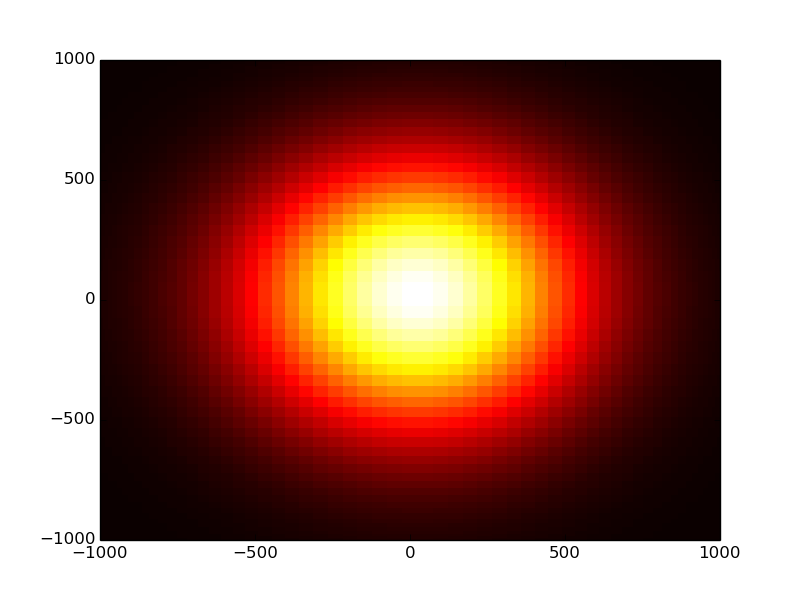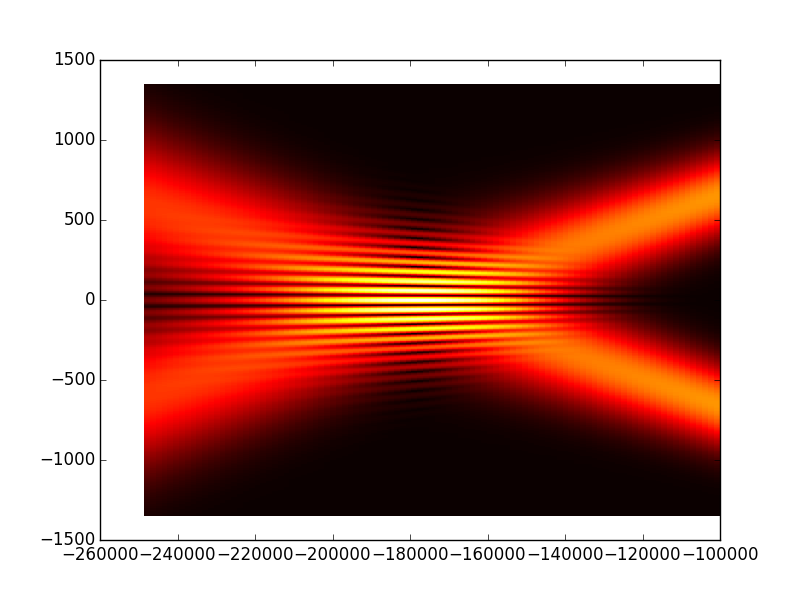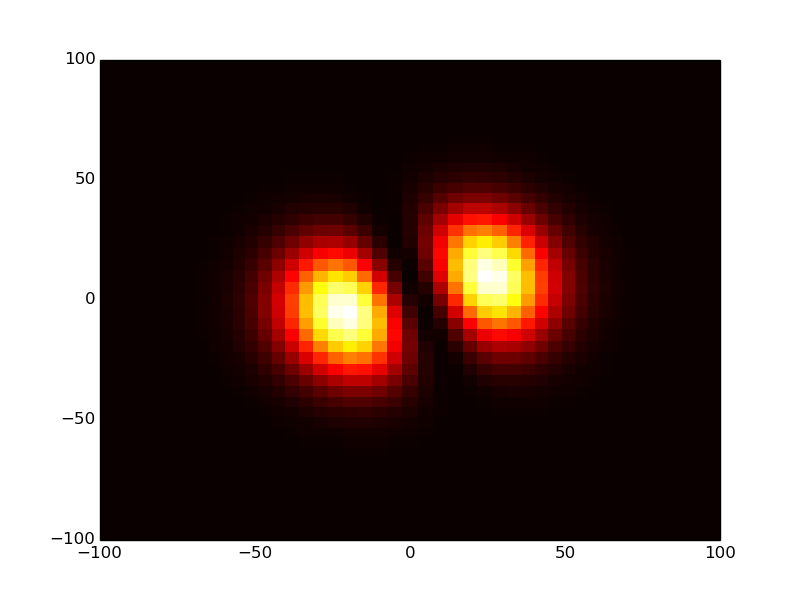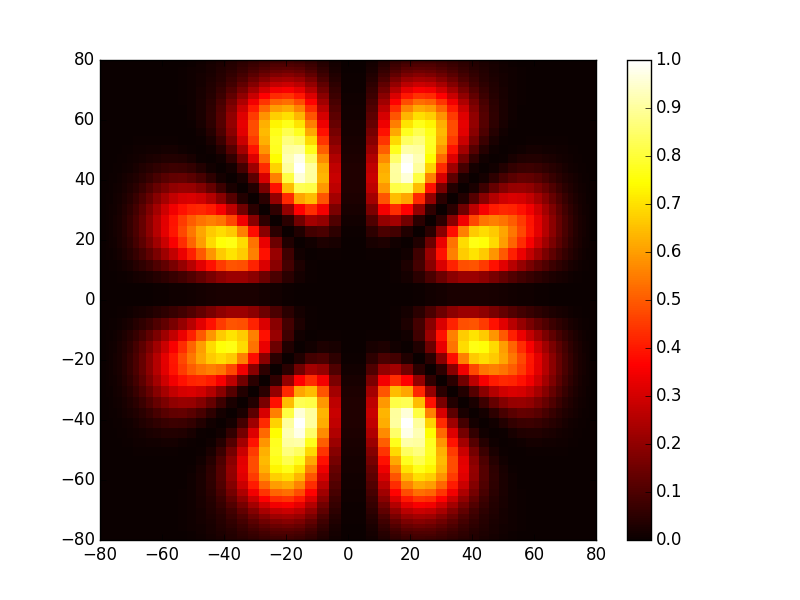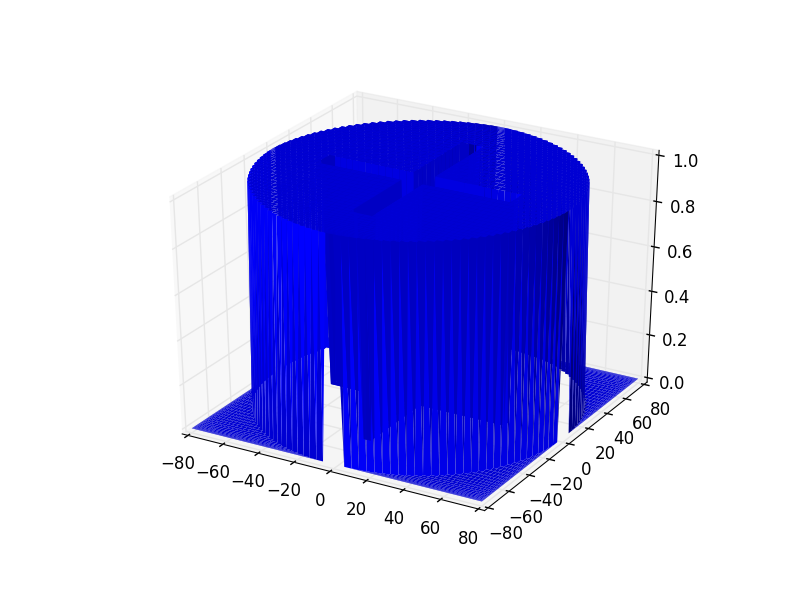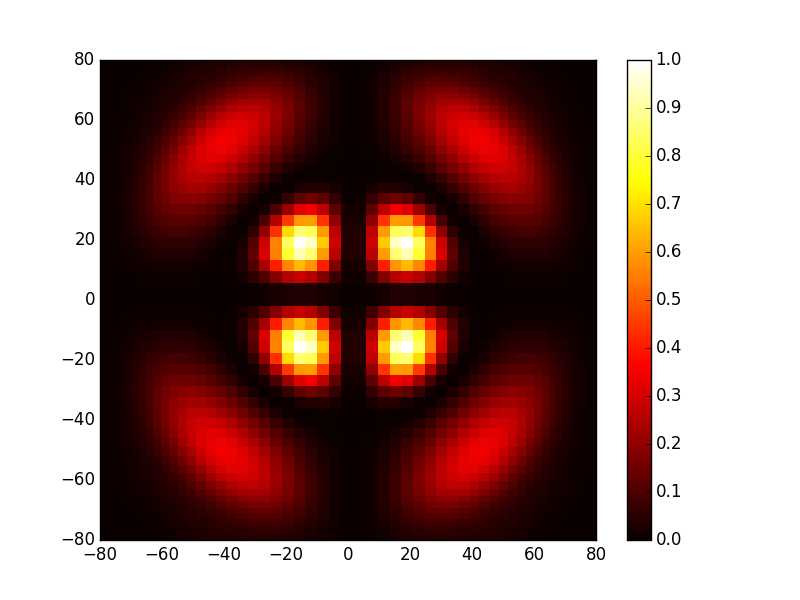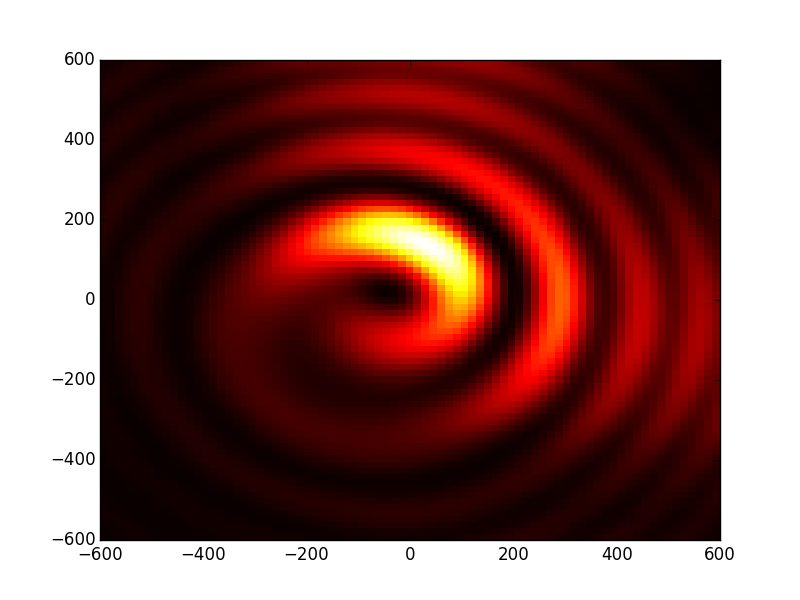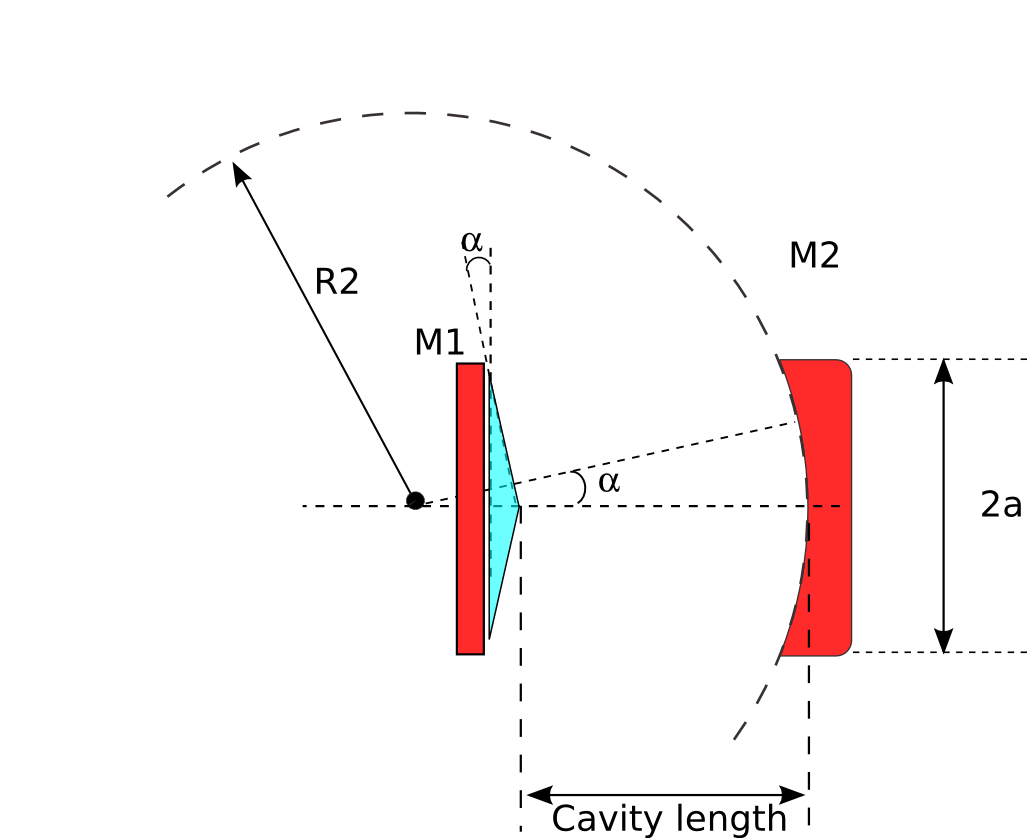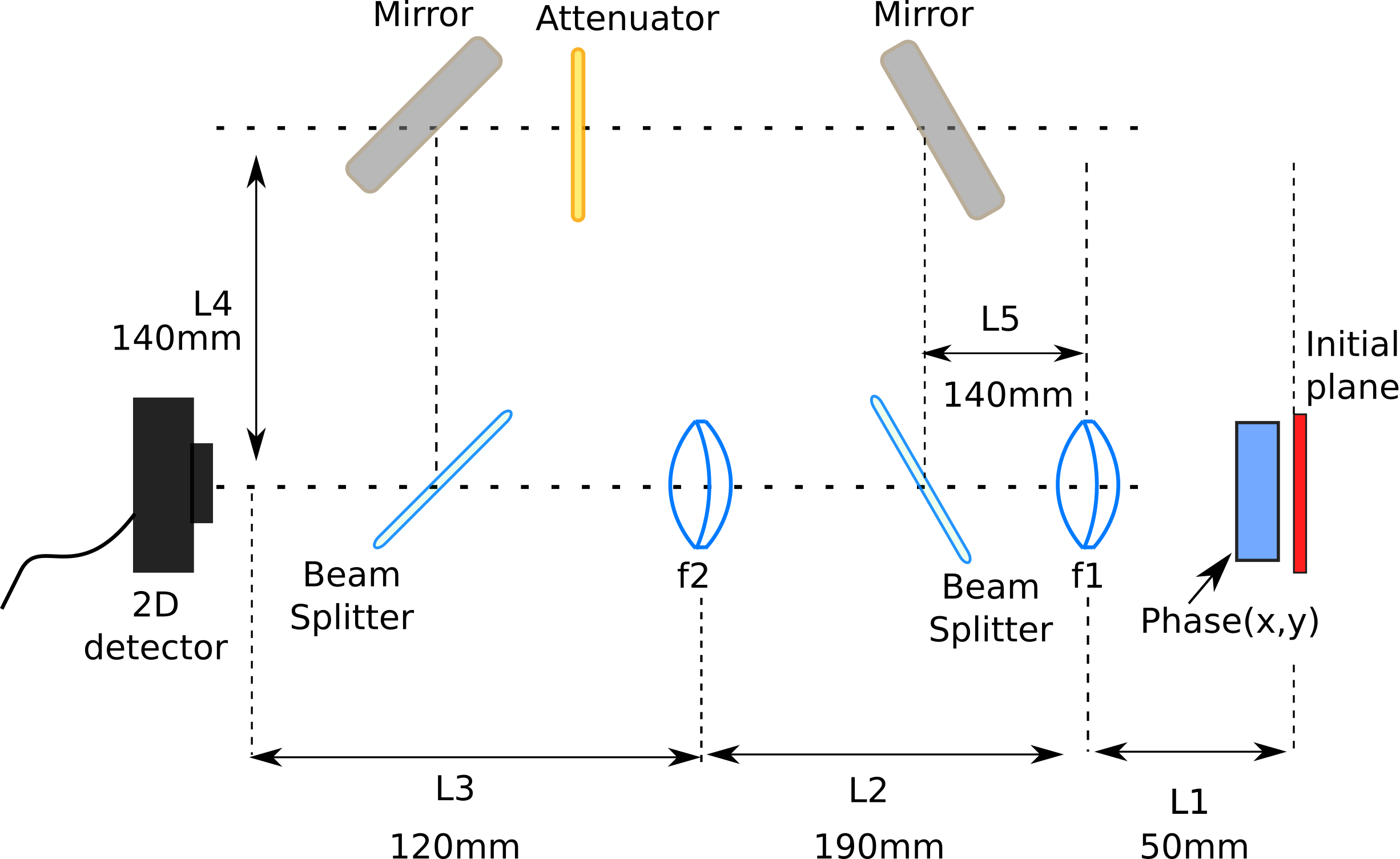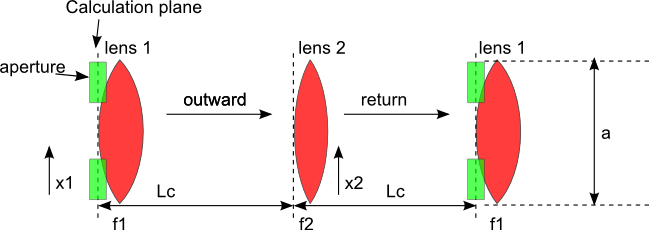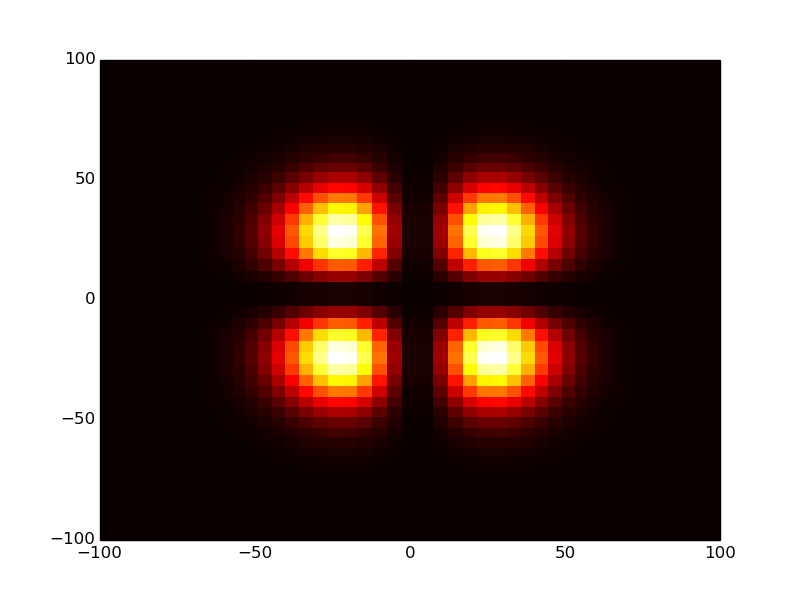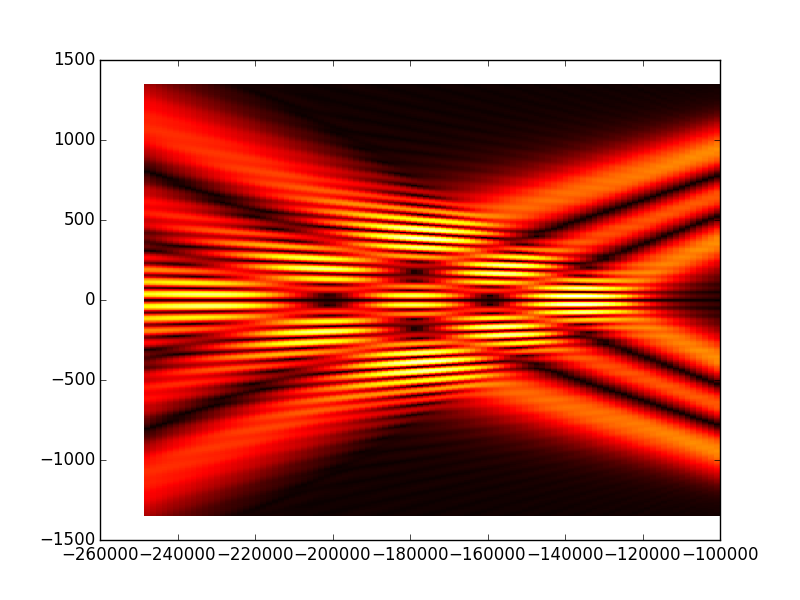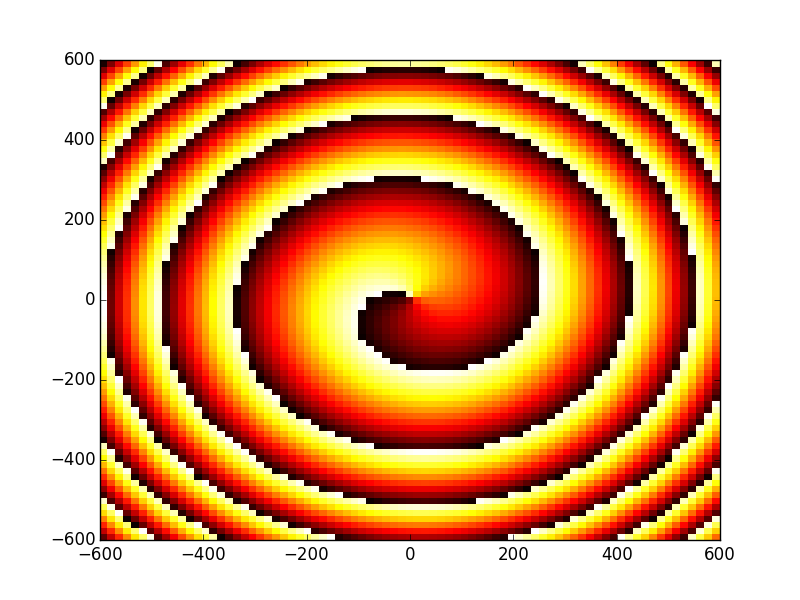Introduction¶
OpenCavity uses the matrix method with Fresnel Kernel formulation, plus an eigenvalue solver to find the fundamental mode of a laser cavity plus the higher order ones. In addition to the mode solver, it contains a Physical optics module (Fresnel propagator) for general 1D and 2D systems, plus a 1D/2D Gaussian beam generator.
- Thanks to its general systems definition, the package can be used as a tool to:
simulate and understand laser cavities physics.
- design & optimization to study the effect of
- aberrations.
- thermal lens.
- intra-cavity phase/amplitude elements (aperture, phase mask...)
- misalignment of optical elements...
- The physical optics module with the Gaussian beam generator can be used as a tool to study beam propagation through optical systems (paraxial case), this can be useful fore example to:
- design & study interference and interferometers.
- beam transformation using phase/amplitude elements. (lens, axicon, aperture, spatial light modulators ...etc)
- high order Gaussian beams propagation through optical systems.
Installation, Python & dependencies
We choose python programming language to write OpenCavity because it is powerful, fast and multi-platform (windows /Linux /Mac Os). It is also friendly, easy to learn, open source with very important and active community, and a lot of useful packages. OpenCavity package like most scientific python softwares, needs scipy and numpy for fast matrix manipulation, and linear algebra calculations. It also depends on matplotlib package for 1D and 2D plots.
Once you have Python and required packages installed, you can download opencavity from releases page and install it.
If you are new to python the next section is for you, we will see how to install python and the needed dependencies for OpenCavity package. However we will see just the minimum required for start using OpenCavity, to learn more about python there are plenty of excellent tutorials on the web, and the official python website would be a good place where to start.




